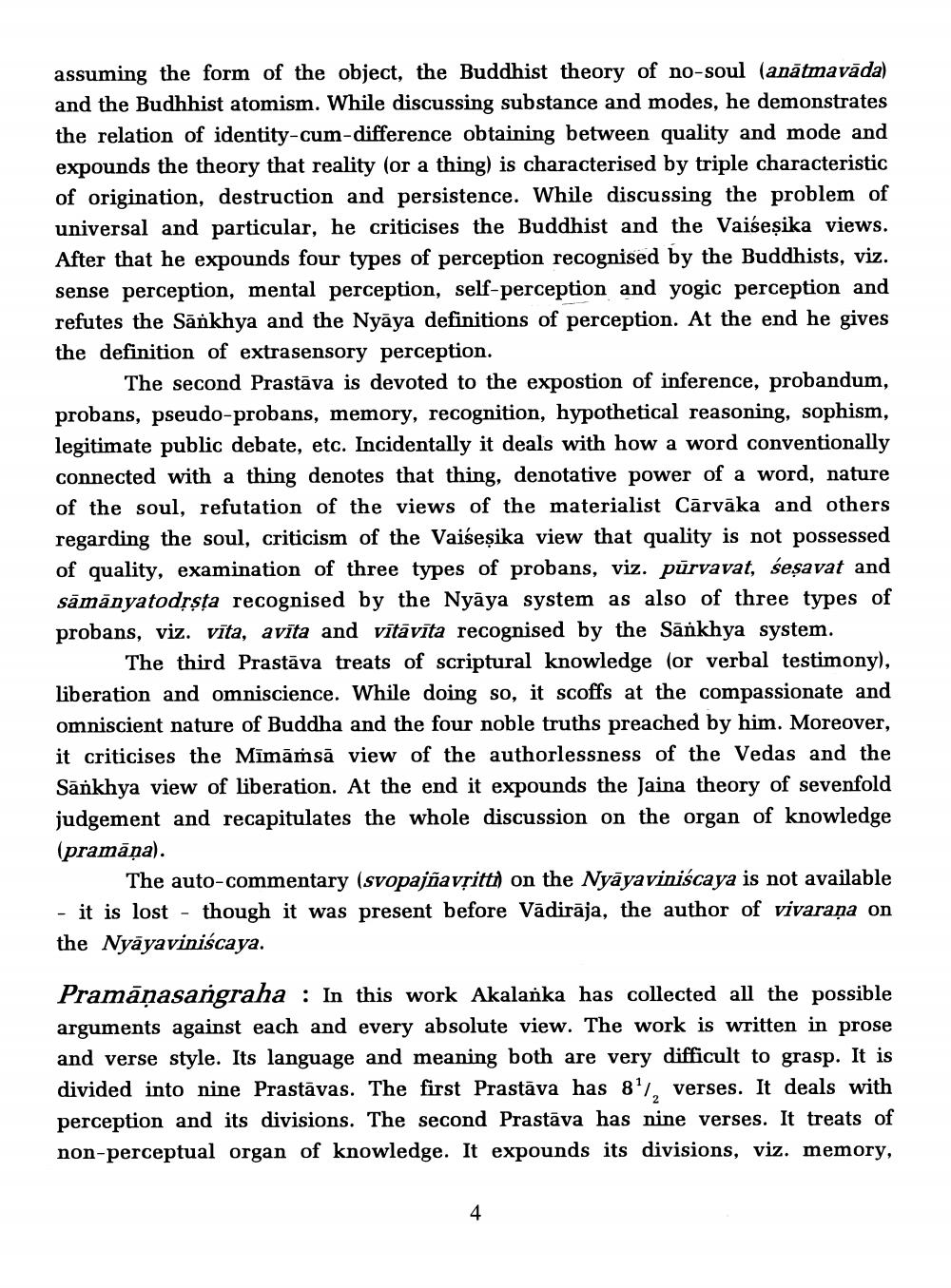________________
assuming the form of the object, the Buddhist theory of no-soul (anātmavāda) and the Budhhist atomism. While discussing substance and modes, he demonstrates the relation of identity-cum-difference obtaining between quality and mode and expounds the theory that reality (or a thing) is characterised by triple characteristic of origination, destruction and persistence. While discussing the problem of universal and particular, he criticises the Buddhist and the Vaiseșika views. After that he expounds four types of perception recognised by the Buddhists, viz. sense perception, mental perception, self-perception and yogic perception and refutes the Sānkhya and the Nyāya definitions of perception. At the end he gives the definition of extrasensory perception.
The second Prastāva is devoted to the expostion of inference, probandum, probans, pseudo-probans, memory, recognition, hypothetical reasoning, sophism, legitimate public debate, etc. Incidentally it deals with how a word conventionally connected with a thing denotes that thing, denotative power of a word, nature of the soul, refutation of the views of the materialist Cārvāka and others regarding the soul, criticism of the Vaiseșika view that quality is not possessed of quality, examination of three types of probans, viz. pūrvavat, śeşavat and sāmānyatodrsta recognised by the Nyāya system as also of three types of probans, viz. vīta, avīta and vītāvīta recognised by the Sāňkhya system.
The third Prastāva treats of scriptural knowledge (or verbal testimony), liberation and omniscience. While doing so, it scoffs at the compassionate and omniscient nature of Buddha and the four noble truths preached by him. Moreover, it criticises the Mīmāṁsā view of the authorlessness of the Vedas and the Sankhya view of liberation. At the end it expounds the Jaina theory of sevenfold judgement and recapitulates the whole discussion on the organ of knowledge (pramāņa).
The auto-commentary (svopajñavsitti) on the Nyāyaviniscaya is not available - it is lost - though it was present before Vădirāja, the author of vivarana on the Nyāyaviniscaya.
Pramāṇasangraha : In this work Akalanka has collected all the possible arguments against each and every absolute view. The work is written in prose and verse style. Its language and meaning both are very difficult to grasp. It is divided into nine Prastāvas. The first Prastāva has 8', verses. It deals with perception and its divisions. The second Prastāva has nine verses. It treats of non-perceptual organ of knowledge. It expounds its divisions, viz. memory,




